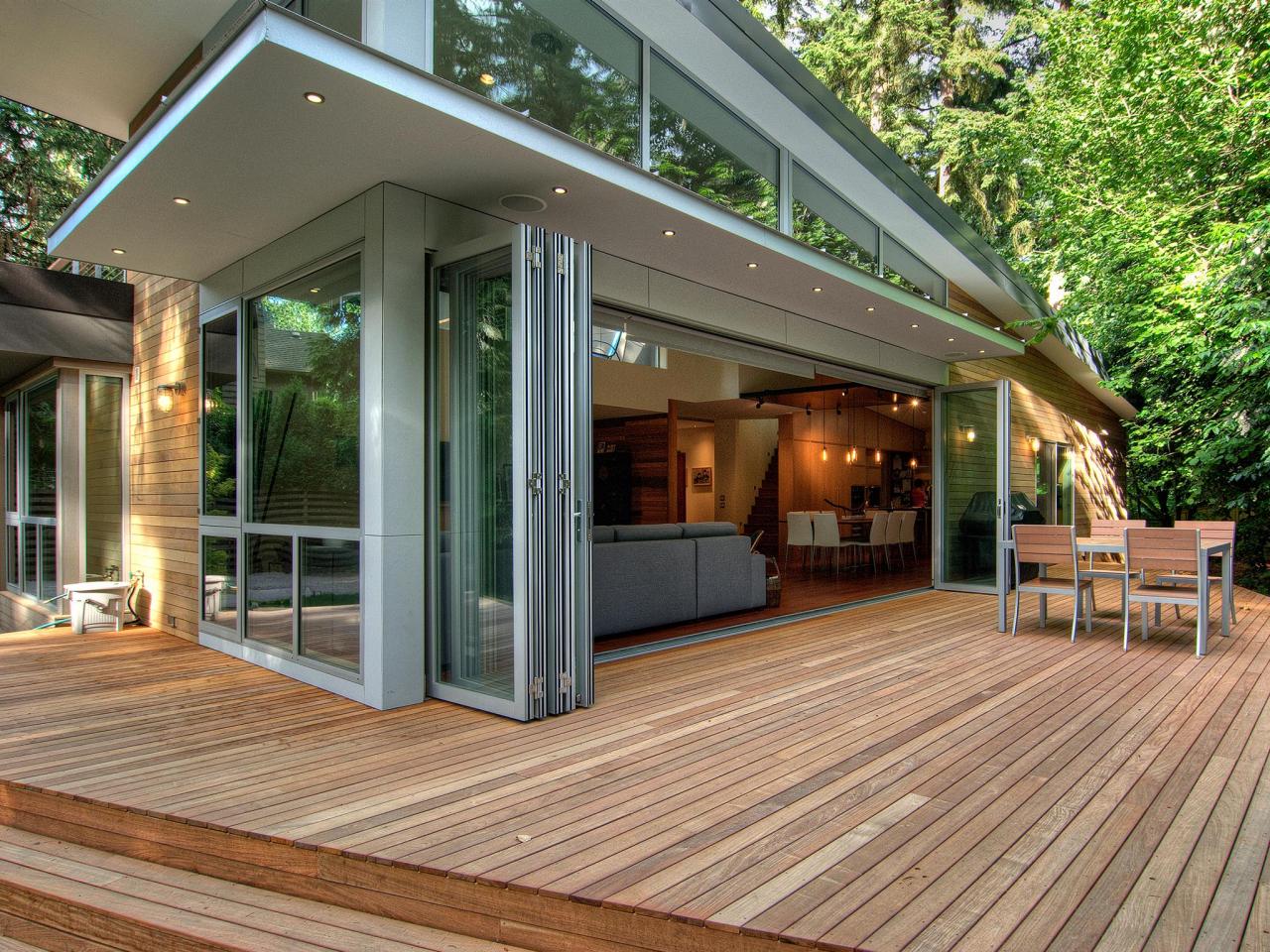Home>diy>Architecture & Design>What Is The Difference Between CAD And Bim


Architecture & Design
What Is The Difference Between CAD And Bim
Modified: January 9, 2024
Learn the key distinctions between CAD and BIM in architecture design. Gain insights into their purposes, tools, and benefits.
(Many of the links in this article redirect to a specific reviewed product. Your purchase of these products through affiliate links helps to generate commission for Storables.com, at no extra cost. Learn more)
Introduction
When it comes to architectural design and construction projects, two crucial technologies are often mentioned: Computer-Aided Design (CAD) and Building Information Modeling (BIM). These two tools revolutionized the way architects, engineers, and construction professionals conceptualize, design, and collaborate on projects. While both CAD and BIM are integral to the architectural and construction industries, they serve different purposes and have distinct functionalities.
In this article, we will explore the key differences between CAD and BIM, delve into their respective functionalities, discuss their advantages and limitations, and explore the industries and applications where each technology is commonly used. By the end, you will have a clear understanding of CAD and BIM, and how they contribute to the architecture and construction processes.
So, let’s dive in and explore the fascinating world of CAD and BIM!
Key Takeaways:
- CAD and BIM are essential technologies in architecture and construction, with CAD focusing on precise design and visualization, while BIM goes beyond geometry to integrate data, collaboration, and decision-making throughout the project life cycle.
- While CAD offers efficiency and visualization, BIM provides comprehensive project information, improved collaboration, clash detection, accurate estimation, and visualization capabilities. Implementing both technologies leads to improved project efficiency, reduced errors, enhanced collaboration, and more sustainable outcomes.
Read more: What Is The Difference Between CAD And BIM?
Definition and Explanation of CAD
Computer-Aided Design, commonly known as CAD, is a technology that enables architects, designers, and engineers to create, modify, and optimize digital representations of physical objects or spaces. It is a digital drawing tool that brings efficiency and precision to the design process.
CAD software provides a wide range of tools and features that allow designers to create detailed 2D or 3D models of structures, components, or machinery. These models can be viewed from different angles and perspectives, enabling designers to visualize and analyze their designs effectively.
CAD offers a multitude of benefits. Firstly, it enhances the accuracy and precision of design by allowing measurements to be defined digitally and preventing errors caused by manual drafting. Secondly, CAD enables designers to create and modify designs quickly and easily, saving time and effort. Changes can be made with just a few clicks, eliminating the need for starting from scratch. Thirdly, CAD allows for efficient collaboration among design teams, making it easier to share, review, and revise designs.
CAD software typically provides a wide range of tools for drafting, including geometric shapes, dimensioning tools, layer organization, and annotation features. It also allows for the application of various materials, textures, and lighting effects to create realistic and visually appealing renderings of the design.
Overall, CAD plays a vital role in the early stages of the design process. It helps architects and designers communicate their ideas and concepts effectively, enabling them to visualize and refine their designs before moving forward with construction.
Definition and Explanation of BIM
Building Information Modeling, commonly known as BIM, is a digital technology that goes beyond the capabilities of traditional CAD software. BIM is a collaborative process that allows architects, engineers, contractors, and other stakeholders to work together on a shared 3D model of a building or infrastructure project.
Unlike CAD, which focuses primarily on the design aspect, BIM integrates multiple dimensions of information, including geometry, spatial relationships, time schedules, costs, and material specifications. This information is stored in a central database, known as the BIM model, which serves as a comprehensive digital representation of the entire project.
BIM enables real-time collaboration and coordination among different disciplines involved in the building life cycle – from design and construction to operation and maintenance. It allows stakeholders to access and modify the BIM model, ensuring that everyone has the most up-to-date information throughout the project’s lifecycle.
BIM offers numerous advantages. Firstly, it facilitates improved coordination and communication between team members, reducing conflicts and errors during construction. Secondly, BIM enables clash detection, highlighting potential clashes between elements such as pipes, ducts, and structural components in the early design stages, minimizing costly rework on-site. Thirdly, BIM provides accurate quantity and cost estimates, allowing for better project planning and budget management.
Furthermore, BIM allows for the creation of detailed simulations and visualizations, enabling stakeholders to experience the building virtually before construction begins. This aids in better decision-making, as it allows for the identification of design flaws, optimization of energy efficiency, and assessment of the building’s performance.
Overall, BIM is a powerful technology that goes beyond traditional CAD, focusing on collaboration, integration, and information sharing. It enhances communication, reduces conflicts, improves efficiency, and leads to better outcomes throughout the entire building life cycle.
Key Differences between CAD and BIM
While CAD and BIM are both essential tools in the architecture and construction industries, there are some key differences between them. These differences lie in their scope, functionalities, and level of collaboration. Let’s explore the main differentiating factors:
1. Scope: CAD primarily focuses on the creation of digital 2D or 3D models of individual design elements. It is primarily used for drafting and visualization purposes. On the other hand, BIM encompasses a broader scope, integrating multiple dimensions of information and enabling collaboration among different stakeholders throughout the entire project life cycle.
2. Level of Detail: CAD allows for the creation of detailed geometric representations of individual design elements. It focuses on the visual aspects of the design. In contrast, BIM goes beyond geometry and incorporates detailed information about the building components, materials, quantities, costs, and schedules. This rich data makes BIM a more comprehensive and informative tool for decision-making.
3. Collaboration and Integration: CAD software is often used by individual designers or small design teams. It does not provide robust collaboration features, which makes coordination and information sharing among different disciplines more challenging. Conversely, BIM encourages collaboration by allowing multiple stakeholders to work on a shared model simultaneously. This integration leads to improved coordination, fewer conflicts, and more efficient project execution.
4. Time and Cost Estimation: While CAD can provide basic visualization of the design, it does not have robust features for accurate time and cost estimation. BIM, on the other hand, integrates scheduling and cost information to provide accurate estimations, facilitating better planning and budget management.
5. Lifecycle Perspective: CAD is primarily used in the design phase of the project. Once the design is complete, the model is typically exported for construction purposes. BIM, in contrast, offers a lifecycle perspective, allowing stakeholders to continue using and updating the model throughout the construction, operation, and maintenance phases. This leads to better facilities management and maintenance planning.
In summary, CAD focuses on individual design elements and visualization, while BIM encompasses a wider range of information and collaboration throughout the project life cycle. BIM provides a more comprehensive, integrated, and collaborative approach to designing, constructing, and managing buildings and infrastructure projects.
Comparison of CAD and BIM functionalities
While CAD and BIM serve different purposes and have distinct functionalities, it is essential to understand how they compare in terms of the features they offer. Let’s delve into the functionalities of CAD and BIM:
CAD Functionality:
- 2D and 3D Modeling: CAD software enables designers to create both 2D and 3D models of individual design elements, such as floor plans, elevations, sections, and detailed components.
- Drawing Tools: CAD provides a wide range of drawing tools, including geometric shapes, lines, curves, and splines, to create precise and accurate designs.
- Dimensioning and Annotation: CAD allows for the addition of accurate dimensions and annotations to the design, facilitating clear communication and documentation.
- Layer Organization: CAD software organizes elements into layers, enabling designers to control the visibility, properties, and organization of different design components.
- Rendering: CAD allows for basic rendering capabilities, providing color, texture, and lighting effects to visualize the design more realistically.
BIM Functionality:
- 3D Modeling and Visualization: BIM software provides robust 3D modeling capabilities, enabling designers to create realistic and detailed representations of the entire project, including building components and infrastructure.
- Parametric Design: BIM allows for parametric modeling, where design elements are associated with specific properties and parameters. This allows for easy modifications and updates throughout the project.
- Information Integration: BIM integrates various dimensions of information, including geometry, materials, costs, quantities, schedules, and more. This enables stakeholders to extract valuable data for analysis and decision-making.
- Clash Detection: BIM software performs clash detection, identifying potential clashes or conflicts between different building components early in the design process. This minimizes rework and construction issues.
- Scheduling and Cost Estimation: BIM facilitates accurate time scheduling and cost estimation by integrating data from the model. This aids in better project planning, cost control, and resource management.
In summary, while CAD focuses on 2D and 3D modeling, drawing tools, and basic rendering, BIM extends the functionality by integrating information, enabling collaboration, facilitating clash detection, and providing scheduling and cost estimation capabilities. BIM offers a more comprehensive and data-rich approach to architectural design and construction processes.
CAD (Computer-Aided Design) is primarily used for creating 2D and 3D models, while BIM (Building Information Modeling) is a more comprehensive process that includes data about the building’s components and their relationships.
Read more: What Is The Difference Between BIM And VDC?
Advantages and Limitations of CAD
CAD, or Computer-Aided Design, has revolutionized the field of architecture and design, bringing numerous benefits and efficiencies to the design process. Let’s explore the advantages and limitations of CAD:
- Precision and Accuracy: CAD software allows for precise and accurate drafting, eliminating errors and inconsistencies that often occur with manual drafting. Measurements can be defined digitally, and designs can be created with high levels of accuracy.
- Efficiency and Productivity: CAD enables designers to create and modify designs quickly and efficiently. Changes can be made with just a few clicks, eliminating the need for starting from scratch. This saves time, effort, and resources.
- Visualization and Communication: CAD provides powerful visualization capabilities, allowing designers to create realistic 2D and 3D models. These models can be viewed from different angles and perspectives, aiding in better communication of design ideas to clients, stakeholders, and construction teams.
- Collaboration and Documentation: CAD facilitates efficient collaboration among design teams. Multiple designers can work on the same project simultaneously, share files, and make revisions easily. CAD also provides accurate documentation of the design process, allowing for better record-keeping and project management.
- Efficient Drafting Process: CAD automates many drafting tasks, such as dimensioning, layer organization, and symbol libraries. This streamlines the drafting process and reduces human error, leading to more efficient and precise designs.
Limitations of CAD:
- Limited Information Integration: CAD primarily focuses on geometry and visual representation. It does not incorporate detailed information about materials, costs, schedules, and other project data. This limits its ability to provide comprehensive information for decision-making.
- Lack of Collaboration Features: While CAD allows for individual designers to work efficiently, it lacks robust collaboration features for multi-disciplinary teams. Sharing and coordinating design changes can be challenging, leading to potential conflicts and communication gaps.
- Complexity and Learning Curve: CAD software can be complex, requiring significant training and experience to operate effectively. The learning curve can be steep for beginners, hindering initial productivity.
- Less Integration with Construction and Maintenance Phases: CAD is primarily used in the design phase and does not seamlessly integrate with the construction and maintenance phases. This can lead to information loss and lack of continuity in the project life cycle.
- Reliance on Computers: CAD software relies heavily on computer systems and software, which can be prone to technical issues and compatibility problems. This can result in disruptions and delays in the design process.
Overall, CAD offers significant advantages in terms of precision, efficiency, and visualization. However, it has limitations in terms of information integration, collaboration features, and lack of integration with the construction and maintenance phases. These limitations highlight the importance of incorporating technologies such as BIM for a more comprehensive and collaborative approach in architectural and construction projects.
Advantages and Limitations of BIM
Building Information Modeling (BIM) is a technology that has transformed the architecture and construction industry by integrating various dimensions of information into a unified digital model. Let’s explore the advantages and limitations of BIM:
Advantages of BIM:
- Comprehensive Project Information: BIM incorporates a wealth of information about the building or infrastructure project, including geometry, materials, costs, schedules, and more. This comprehensive data allows for better decision-making, improved coordination, and accurate estimations.
- Improved Collaboration and Coordination: BIM fosters collaboration among different stakeholders, including architects, engineers, contractors, and facility managers. They can work together on a shared 3D model, making it easier to communicate, share information, and coordinate activities. This leads to fewer conflicts, reduced errors, and improved project outcomes.
- Clash Detection and Conflict Resolution: BIM software has powerful clash detection capabilities, allowing potential clashes and conflicts between different building elements to be identified early in the design stage. This saves time and resources by minimizing rework and on-site conflicts.
- Accurate Estimation and Planning: BIM integrates scheduling and cost information, enabling accurate estimations of time and cost. This facilitates better project planning, resource allocation, and budget management. It also helps in identifying potential cost-saving opportunities and optimizing project schedules.
- Visualization and Simulation: BIM provides realistic 3D visualizations and simulations of the building or infrastructure project. This allows stakeholders to experience the project before construction begins, identifying design flaws and optimizing energy efficiency. It aids in better decision-making and enhances client understanding and engagement.
Limitations of BIM:
- Complexity and Learning Curve: BIM software can be complex, requiring significant training and expertise to use effectively. The implementation process and learning curve can be time-consuming and costly for organizations transitioning from traditional design processes to BIM.
- Technical Challenges: BIM relies on robust computer systems and software. Technical issues such as software compatibility, data interoperability, and file sharing can pose challenges and disrupt the workflow. These technical challenges need to be addressed to ensure smooth implementation and collaboration.
- Initial Investment Costs: Implementing BIM requires an initial investment in software, hardware, and training. Smaller organizations may find it challenging to justify the costs, particularly if they are working on smaller-scale projects.
- Dependence on Data Quality: The quality and accuracy of the information input into the BIM model greatly influence the effectiveness of the process. Errors or inaccuracies in data can result in misleading or faulty analysis, leading to potential issues during construction or operation.
- Legal and Contractual Challenges: BIM may present legal and contractual challenges due to the complex nature of collaboration and sharing of information. Ownership of the BIM model, liability for errors, and intellectual property rights need to be addressed through proper contracts and agreements.
Despite these limitations, BIM offers significant advantages in terms of comprehensive project information, improved collaboration, clash detection, accurate estimation, and visualization. It has become an essential tool in the architecture and construction industry, enabling more efficient and effective project delivery.
Industries and Applications where CAD is commonly used
Computer-Aided Design (CAD) has become an indispensable tool in various industries, enabling professionals to create precise and detailed digital designs. Let’s explore some of the industries and applications where CAD is commonly used:
1. Architecture and Construction: CAD is extensively used by architects, engineers, and construction professionals in the design and construction of buildings and infrastructure projects. It allows for the creation of 2D and 3D models, detailed blueprints, and accurate documentation.
2. Manufacturing and Industrial Design: CAD is widely used in the manufacturing industry for product development and design. It helps in creating digital representations of components, optimizing designs for manufacturing processes, and simulating the assembly of complex machinery or equipment.
3. Automotive and Aerospace: CAD plays a crucial role in the automotive and aerospace industries. It is used for designing vehicle parts, engines, aircraft components, and complete vehicle assemblies. CAD software enables engineers to visualize, analyze, and optimize the performance of these complex systems.
4. Electronics and Electrical Engineering: CAD is utilized in the design and development of electronic circuits and electrical systems. It enables engineers to create detailed schematics, circuit boards, and wiring diagrams, ensuring precision and accuracy in the manufacturing and assembly process.
5. Product Design and Consumer Goods: CAD is employed in the design of consumer products, including furniture, appliances, consumer electronics, and fashion accessories. It enables designers to create realistic 3D models, make modifications easily, and conduct virtual testing and simulations.
6. Interior Design and Architecture Visualization: CAD software is widely used in the interior design industry to create digital layouts, visualize spaces, and generate realistic 3D renderings. It helps in presenting design concepts to clients and making informed decisions in terms of finishes, lighting, and furniture placement.
7. Civil Engineering and Infrastructure Projects: CAD plays a critical role in civil engineering projects such as roads, bridges, tunnels, and dams. It facilitates precise design and analysis, allowing engineers to optimize structures, analyze load capacities, and ensure safety and functionality.
8. Urban Planning and Landscape Architecture: CAD is utilized in urban planning and landscape architecture to create detailed site plans, analyze developments, and simulate the visual impact of proposed designs. It aids in creating sustainable and aesthetically pleasing environments.
9. Education and Research: CAD is extensively used in educational institutions and research facilities to teach design principles, enable students to explore digital design concepts, and conduct research in various engineering and design disciplines.
In summary, CAD software is widely used across various industries for diverse applications, including architecture, manufacturing, automotive, electronics, product design, civil engineering, and more. Its versatility, precision, and visualization capabilities make it an essential tool for professionals in these fields.
Industries and Applications where BIM is commonly used
Building Information Modeling (BIM) has rapidly gained popularity across multiple industries, revolutionizing the way buildings and infrastructure are designed, constructed, and managed. Let’s explore some of the industries and applications where BIM is commonly used:
1. Architecture, Engineering, and Construction (AEC): The AEC industry is one of the primary sectors where BIM is extensively utilized. It facilitates collaboration among architects, engineers, contractors, and other stakeholders throughout the entire project life cycle. BIM enables the creation of comprehensive 3D models, clash detection, accurate cost estimation, and effective project coordination.
2. Facility Management and Operation: BIM is invaluable for facility management and operation, enabling efficient maintenance and operation of buildings and facilities. BIM provides stakeholders with detailed information about the building components, maintenance schedules, energy systems, and performance data, allowing for optimized facility management and enhanced asset performance.
3. Infrastructure Projects: BIM is widely used in large-scale infrastructure projects, such as highways, railways, airports, and utilities. It helps in creating accurate 3D models of the infrastructure, analyzing construction phasing and logistics, and managing complex data for better project coordination and cost control.
4. Energy Analysis and Sustainability: BIM enables energy analysis and sustainability assessments of buildings and infrastructure. It helps in optimizing energy efficiency, evaluating the environmental impact of materials and construction processes, and providing insights for sustainable design and construction practices.
5. Interior Design and Space Planning: BIM is utilized in interior design and space planning to create detailed layouts, visualize spaces, and simulate lighting conditions. It aids in efficient material and furniture selection, enabling designers to create functional and aesthetically pleasing interiors.
6. Healthcare and Hospital Facilities: BIM is extensively used in the design and construction of complex healthcare facilities. It allows for precise planning and coordination of medical equipment, utility systems, and patient flow. BIM aids in optimizing workflows, enhancing patient safety, and ensuring compliance with healthcare regulations.
7. Education and Research: BIM is employed in educational institutions and research centers to teach BIM principles, conduct research on new methodologies and technologies, and explore innovative approaches to design, construction, and facility management.
8. Government and Public Infrastructure: Government entities and public infrastructure projects frequently use BIM to improve efficiency, reduce costs, and deliver sustainable infrastructure solutions. BIM aids in the planning, design, and management of public buildings, transportation systems, and utilities.
9. Industrial and Manufacturing Facilities: BIM is applicable in the design and construction of industrial and manufacturing facilities, enabling precise coordination and optimization of processes, equipment layout, and production workflows. It helps in streamlining operations and improving productivity.
In summary, BIM has diverse applications in industries such as AEC, facility management, infrastructure, energy analysis, interior design, healthcare, education, government, and manufacturing. The collaborative and data-rich nature of BIM makes it indispensable for professionals in these sectors, transforming the way projects are planned, executed, and managed.
Conclusion
In conclusion, both Computer-Aided Design (CAD) and Building Information Modeling (BIM) have transformed the architecture and construction industries, revolutionizing the way professionals design, collaborate, and manage projects. While CAD focuses on the creation of 2D and 3D digital models, BIM goes beyond geometry and integrates multiple dimensions of information, facilitating collaboration and data-driven decision-making throughout the entire project life cycle.
CAD offers advantages such as precision, efficiency, visualization, and ease of use. It is commonly used in industries such as architecture, manufacturing, automotive, electronics, and consumer goods. However, CAD has limitations in terms of information integration, collaboration, and lack of integration with the construction and maintenance phases.
BIM, on the other hand, provides comprehensive project information, improved collaboration, clash detection, accurate estimation, and visualization capabilities. It is widely used in industries such as architecture, engineering, construction, facility management, infrastructure, and energy analysis. BIM enables stakeholders to make informed decisions, optimize resource allocation, and enhance project outcomes.
Combined, CAD and BIM offer a powerful toolkit for professionals in the architecture and construction industries. CAD provides detailed design capabilities and visualization, while BIM adds integration, collaboration, and data-rich functionalities. Implementing both technologies can lead to improved project efficiency, reduced errors, enhanced collaboration, and more sustainable and cost-effective outcomes.
As technology continues to advance, the seamless integration of CAD and BIM is becoming increasingly important. The future of architecture and construction lies in harnessing the power of these technologies to create more sustainable, efficient, and visually stunning designs. Embracing both CAD and BIM not only improves the workflow and outcomes of projects but also ensures the industry remains at the forefront of innovation.
Frequently Asked Questions about What Is The Difference Between CAD And Bim
Was this page helpful?
At Storables.com, we guarantee accurate and reliable information. Our content, validated by Expert Board Contributors, is crafted following stringent Editorial Policies. We're committed to providing you with well-researched, expert-backed insights for all your informational needs.














0 thoughts on “What Is The Difference Between CAD And Bim”